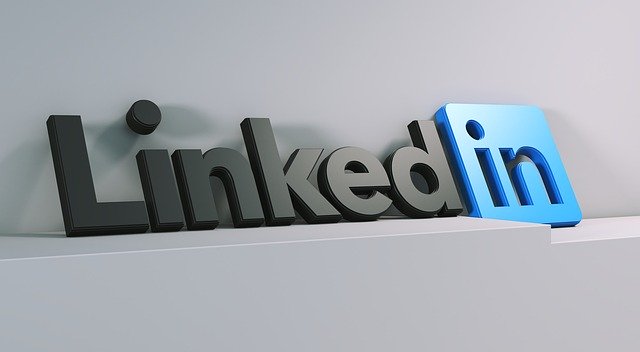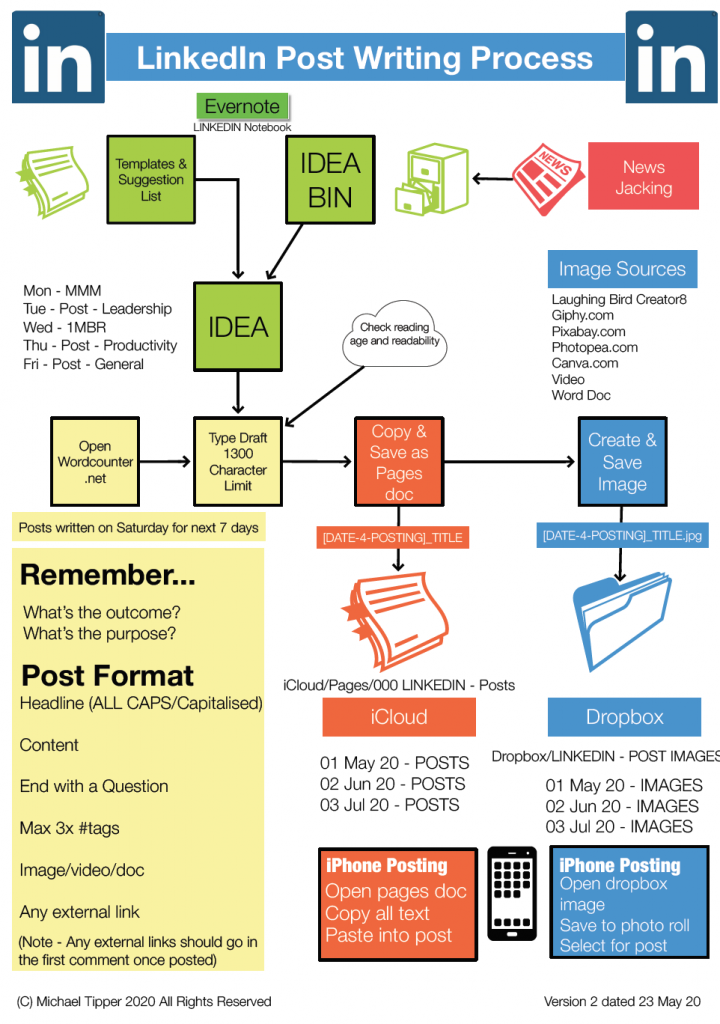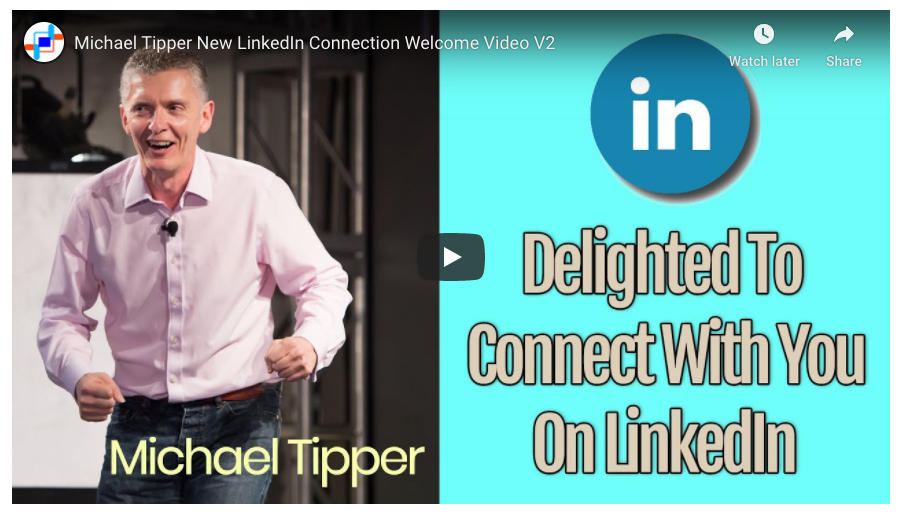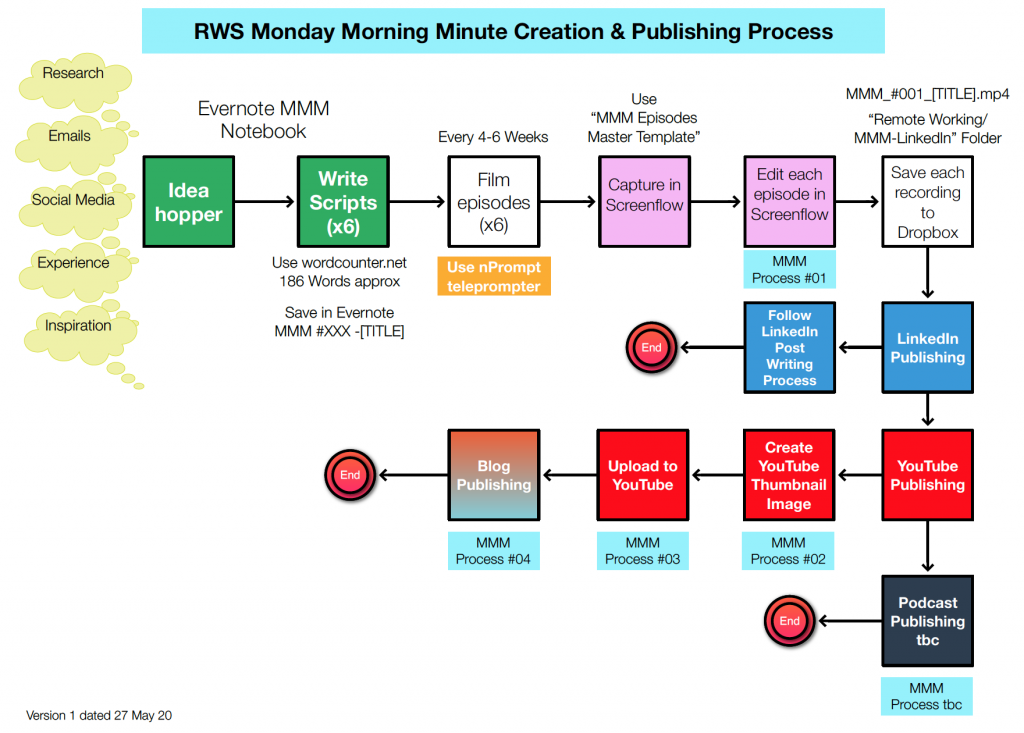
In This Episode…
In this episode I share how I’ve put together my new system for marketing my services on LinkedIn.
After being on that business social network for years, I thought it was time to start using it to develop my connections and business relationships. Up until now I have done nothing with it.
The first thing I had to do was find some experts and invest in their course. I then had to work out what I wanted from LinkedIn to narrow down the specific behaviours I wanted to develop.
To do that I needed to develop a series of processes to form my LinkedIn system. And as a result of my efforts I have created a personalised system consisting of the following
- Process Maps
- Resources
- Routines
- Pre-written response templates
- A plan for creating a daily post
Listen to this episode to hear the many benefits that have arisen from this effort to create a system with these processes. I also share the importance of having a growth mindset as I have developed this system.
And I wrap it all up with the repeatable step by step approach I took to achieve this.
Episode Transcript
Hi, and welcome to today’s episode of the Profit Productivity Podcast. It’s your host, Michael Tipper. Who else would it be?
Now, today I have been looking at a number of things and I am working at the moment on developing my presence on LinkedIn.
I’ve been a LinkedIn member for eight, nine years or so now, and I think I was one of the first 2 million members in the UK. And so just recently I have decided to be more proactive on there.
And so what I’m doing is I’ve been defining what activity I need to do to start pushing myself out more into the marketplace. To develop connections and increase my network. To develop greater business relationships, which ultimately will lead to more work.
So that’s what I’ve been doing. And I’ve staged that in a number of ways.
First of all, even though I’ve been linked on LinkedIn for a while, and I’ve just basically accepted every connection request I’ve ever had – I’ve done little else other than that.
I Didn’t Know How To Use LinkedIn
I realised I don’t know what to do.
So the first thing I did is I went out into the marketplace to find people who clearly know what they’re talking about with LinkedIn, and go to them and listen to their webinars.
I bought a couple of products and basically have spent three or four weeks understanding it in greater depth. What I need to do now, having gone to a number of sources is being able to see what the common themes are.
I have identified the common themes, such as the right way of positioning my profile, such as how to post and what sort of things to post; how to comment and then understanding the etiquette that’s required on this platform.
So getting a mentor, getting someone who I can model from success has been key.
Now having done that, and there was a lot of information, I then had to decide what was important for me.
What specifically did I want to get out of LinkedIn And what did I want it to do for me?
Now, getting clear on that meant that I could then narrow down some of the advice that I’d gathered from the various gurus and from the research I’d done to identify some specific behaviours that I wanted to do.
I Consolidated The Guru’s Advice
Essentially that’s about commenting on posts; writing my own posts. It’s about being able to deal with incoming connection requests in a professional way.
It’s about being able to deal with what happens when people look at my profile – how do I handle that? It’s about how do I go out into the marketplace and start making connections with people I want to connect with.
And so working out exactly what I want to do, working out the outcome I’m seeking and what the purpose of that is, and then actually putting a plan in place to be able to do that has been really quite an interesting and somewhat challenging journey.
Now as a systems guy and a process guy, I’ve loved the approach of getting down and working out a flow diagram of “if this happens then I should do this, but if this happens and that happens, I should do that”.
I’ll admit, it’s been a labour of love but what’s happened is I’ve now got a number of really clear and quite defined processes in my system.
I Created My Own Linked In System
I’ve now got a LinkedIn system that allows me to deal with some of these scenarios I’ve already described.
And that system consists of process maps. It consists of resources, such as pre written responses to connection requests and potential connections viewing my profile.
I’ve put them in a place where I can get to them either on any of my mobile devices or on my desktop, and I know what triggers each of the activities.
I’ve been setting up routines. So for example, my daily posting behaviour; working out how I’m actually going to decide what to write on each day.
As it happens every Saturday, I write five posts in preparation for the next week. Then all I’ve got to do every morning is just post them, comment on other people’s posts and respond to any comments that come in on my post.
So all this has been put in place.
Now it’s been set up for what will probably be maybe an hour’s worth of work a day, which is an hours worth of work on marketing I wasn’t doing before.
My LinkedIn Post Writing Process
Here’s the post writing process which goes from getting an idea, to drafting it through to where I save it in preparation for posting it, through to the creation of the graphic that I will put with it, to the templates for the various posts styles I want to do.

It’s been really worthwhile because now what I’ve got is a system with a series of processes such that if someone requests a connection and I accept, I know exactly what to do.
I can go straight to a prewritten, response that links to a video I’ve made that says, “Hi, thank you for connecting. Here’s who I am.”

And I can do that in 5-10 seconds flat. That’s that sorted out. If someone requests a connection.
I’ve got a similar setup for that. I have a setup for publishing a regular Monday Morning Minute video giving advice to the managers of remote teams which I’m doing every week.

I’ve been doing that for three or four weeks now, and having a process means, it takes away the thinking time. I know exactly what I need to do. All I need to do is focus my creativity on what the content is that I’m going to be putting out there, not how I’m going to do it.
I Can Now Outsource Or Delegate All Of This
And of course, the beauty of this now is if all I do is just record the video, I can pass all this off to someone else to edit it, to do all the tagging, to upload it into YouTube, to put it onto the blog.
I don’t have to worry about the mechanics because I’ve pre defined what that is.
I think I’ve mentioned this as an approach many times previously in previous episodes, but I can’t stress the importance of it. This is I am acting as the architect of my future business by being efficient, being effective and developing something that means that I can just allow it to flow seamlessly.
Now at the moment, I’m at version1 and in some cases, version 2 of some of these processes, it’s still early days.
Having A Growth Mindset Is Key
I’ve mentioned the growth mindset in the past as being a really important approach to take in doing anything.
I’ve adopted a growth mindset to this already. I’ve changed some things because as I’ve realised, as I’ve done them, they don’t quite work. So I’ve had to find another way of doing them.
But by recognising that’s necessary and be okay for it to happen means that my system will evolve into something really quite powerful.
I remember a few years ago, when I was running a leadership development programme in the nuclear industry. We started and designed a program that was really quite good in its day.
And then four and a half years later, the programme principally had the same structure and the same topics and the same instructors. But because we’d fine tuned it continuously over those four and a half years, it was in such a good state.
We could never have designed it from scratch to be that good because we had to learn and evolve and learn and evolve.
And it’s the same with this.
I’m still in the early days of going out on LinkedIn, I’m still looking at how I need to be and what I need to do, but now I’ve got a starting point.
And as I move forward, I will evolve. I will get better. I’ll see things that I’m not doing now that I need to do. I’ll see the things I’m doing now that I don’t need to do. I’ll find better ways of doing things. I’ll find other things I can do to expand my reach into the world of LinkedIn even further.
And then I’ll start developing the processes of talking to clients, potential clients, developing a system for promoting and marketing the products and services I have offer.
All that will evolve.
I think a big lesson for me in all of this is that, I couldn’t just design this system from scratch. First of all, that’s often quite overwhelming because it can get quite complex.
However that’s probably more a reflection of me than anything else.
But secondly, it doesn’t work like that. You start off with, as they say in the software or product development worlds, a minimum viable product (MVP).
And then you move forward and move forward and move forward slowly, getting better and better.
So today’s been the culmination of a couple of weeks of work of getting to this stage.
I’m at the point now where I’m about to launch into doing this properly.
I’ve been testing it and developing it and fine tuning it, but now it’s going to be launched with its first iteration.
I’m really quite excited.
In Summary Here Is What I’ve Done
So just to summarise the approach I’ve taken:
- I went and found out people who knew what they were doing.
- I understood the key things and I started modeling what they did.
- I took the best of what they did that suited me and defined exactly what I wanted out of LinkedIn.
- I Then identified a series of processes and created a system to be able to easily repeat the behaviours necessary, to achieve my outcomes.
- Now I’m running it, I’m fine tuning it so it evolves.
So today has been a rewarding day, a fulfilling day, and this is a step by step process that I will repeat over and over and over again.
With this, I’ve created another brick that goes into the foundations of the business. That brick, because the work I’ve done today, is permanent.
It’s in place now and it’s not going to fall away because I’ve been rigid and fixed and disciplined about the definition of the activities.
I’ve been careful to put things in the right places, the right folders and files on my desktop.
I know where they are and I’ve printed off the procedures and laminated them for ease of use.
So they’re ready and easily referenced and have made sure that I would have to be completely stupid for this to fail.
And that’s the whole point of doing this – to protect myself from my own inherent laziness to think.
So, a great day.
Until tomorrow.